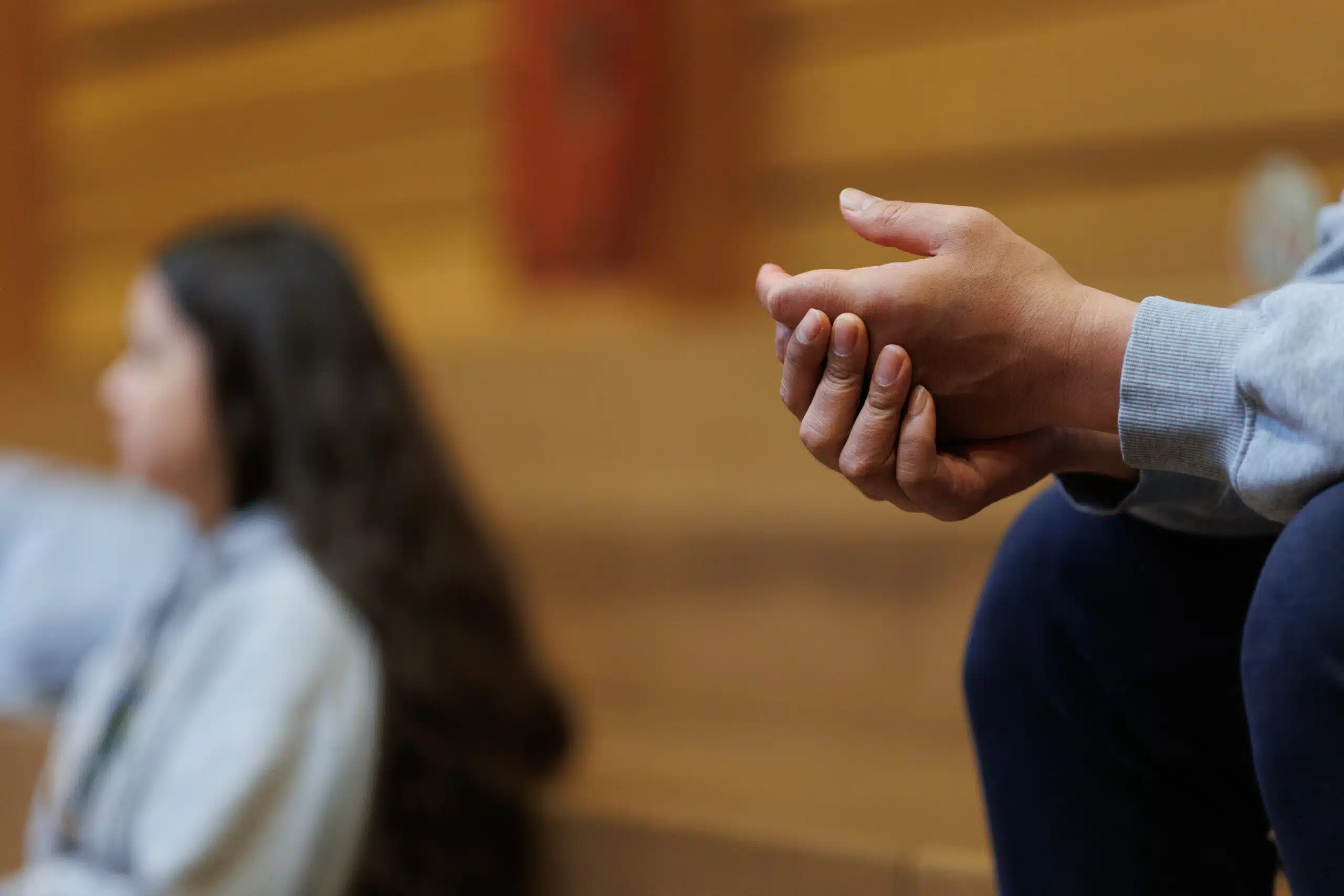Stress and anxiety don’t just affect the mind – they show up in the body too. If you find yourself experiencing these symptoms, it may be a sign that you are stressed:
- Physical Symptoms
- Sleep problems, headaches, stomach aches
- Muscle tension, teeth grinding, fast breathing
- Fatigue or low energy
- Cognitive Symptoms
- Irritability, anxiety, rumination
- Difficulty concentrating, social withdrawal
- Assuming the worst in situations
If these symptoms describe you, know that you are not alone. Experiencing stress is normal. You might feel overwhelmed with coursework and expectations. Maybe you’re dealing with money problems or feeling lonely and like you don’t belong. Stress can come from many directions. Here are some common causes for post-secondary students, which you may personally relate to:
- Academic Pressures: assignments, group projects, perfectionism, exam prep
- Time Management: juggling studies, family responsibilities, deadlines
- Finances: tuition, living expenses, fear of running out of money
- Social Factors: loneliness, making friends, unhelpful instructors
- Life Balance: balancing rest, social life, health, and school
- Non-Academic Stressors: family issues, physical health, mental health, internship/job search challenges
You may already be doing your part — showing up, meeting deadlines, and trying to stay organized. When that’s not enough, these six approaches can help restore balance and calm. These suggestions follow a whole-person approach, grounded in both practical strategies and Indigenous knowledge systems.
- Ground Yourself in the Present–“Wherever you are, be there totally.” – Eckhart Tolle
- 5-4-3-2-1 Senses Technique: Notice 5 things you see, 4 you feel, 3 you hear, 2 you smell, 1 you taste.
- Stay in your 24 hours: Focus on what’s happening now. Avoid spiraling into “what ifs.”
- Journaling: Write out what’s worrying you. It can improve mental clarity, enhance emotional processing, and provide space for reflection.
- Reconnect with Your Breath & Body–“The body says what words cannot.” – Martha Graham
- Box Breathing: Inhale (4) → Hold (4) → Exhale (4) → Hold (4). Repeat.
- Progressive Muscle Relaxation: Tense and release muscle groups to release stored tension.
- Movement as Medicine: Stretch, practice yoga, walk, dance, or swim — motion supports both physical and emotional release.
- Ceremonial Movement: Participating in healing dances moves the body while reconnecting with land and community. Some options could be men’s Grass Dance, or women’s Jingle Dress Dance.
- Nourish Yourself Intentionally– Traditional wellness is rooted in the land — eating what nourishes our ancestors can ground and heal us today.
- Eat for Balance: Choose nourishing, whole foods. Whenever possible, incorporate traditional foods — wild game, fish, berries, and produce like wild rice and corn.
- Stay Hydrated & Rested: Drinking water and getting consistent sleep support physical and mental clarity.
- Avoid overstimulation: Reduce caffeine, screen time, and environments that drain energy.
- Make Space for Spirit & Ceremony–Ceremony invites clarity. It slows you down and brings you back to what matters: spirit, land, relationships.
- Participate in Ceremonies: Sweat lodges, offering tobacco, vision quests, and shaking tents allow you to connect to spirit, ancestors, and the land.
- Offer Gratitude or Prayer: Take time each day to offer words or thoughts to Creator, Mother Earth, your ancestors, or your own higher self. A moment of reflection can shift your energy.
- Lean Into Community & Connection–Health is relational. When we tend our ties to others and the land, our spirits lighten.
- Talk it out: Share your thoughts with friends, family, or trusted mentors. Don’t carry stress alone.
- Engage in group activities or community events that spark joy, laughter, or cultural meaning.
- Recognize the medicine in relationships: Healing is not just individual — it flows through families, peers, and shared spaces.
- Reframe the Mind, Don’t Ignore the Heart– Healing starts when we name what hurts and believe that we can walk forward, even slowly.
- Accept your emotions: sadness, stress, or anxiety are valid and part of being human.
- Visualize strength: Picture yourself managing a hard situation calmly and successfully.
- Avoid multitasking: Focus on one thing at a time.
- Seek out Elders or helpers for guidance when the weight is too much to carry alone.
Healing is a circle, not a line. You return to yourself again and again.
Stress won’t disappear overnight, and staying calm is not about perfection. Healing and the state of being calm are ongoing practices.
Pick one thing from this list to try this week.
Start small.
Return to it often


